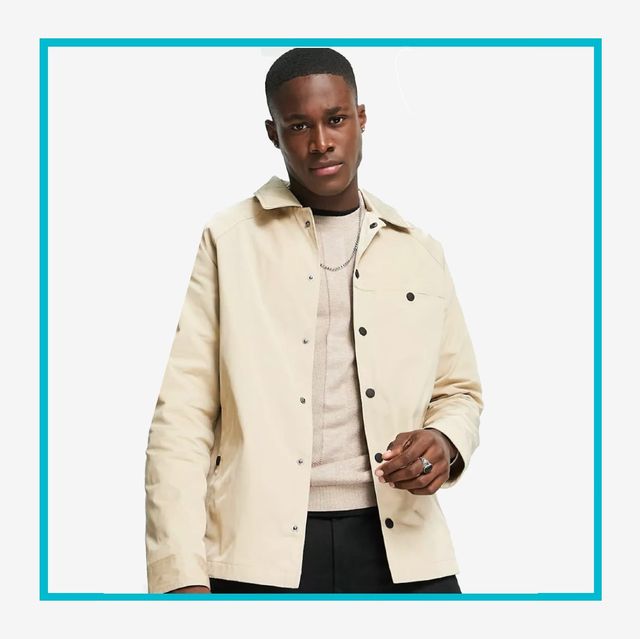How Branded Clothing Uses Fabric to Match Season and Occasion
The Relevance of Lasting Apparel: How It Influences the Setting and Your Storage room
Lasting garments is significantly acknowledged for its critical role in lessening the ecological influence of the rapid apparel industry. By concentrating on green products and honest production methods, it addresses pushing eco-friendly problems. This change not just benefits the planet yet likewise influences consumer choices, bring about a much more thoughtful method to wardrobe monitoring. Comprehending these dynamics increases essential questions concerning fashion's future and individual obligation in forming it.
The Environmental Impact of Quick Fashion

Advantages of Sustainable Materials
Lasting products supply significant advantages, specifically via green fabric options that lessen environmental damage. These materials also show durability and long life, minimizing the demand for frequent substitutes. Because of this, they contribute to a much more sustainable fashion business and advertise responsible consumer habits.
Eco-Friendly Material Options
While the apparel industry has actually long been connected with fast trends and ecological damage, the rise of eco-friendly material selections offers a transformative opportunity. Lasting products such as organic cotton, hemp, and Tencel have gained appeal as a result of their lower environmental impact. These textiles are usually created without damaging pesticides and need much less water, decreasing their carbon impact - Branded Clothing. Additionally, several environmentally friendly fabrics are eco-friendly, adding to a circular economic situation by lessening waste. Selecting sustainable materials not just supports eco accountable techniques however likewise promotes much healthier ecosystems. As customers end up being more knowledgeable about their purchasing power, the need for environment-friendly textiles encourages brand names to introduce and adopt more sustainable production methods, ultimately profiting the world and future generations
Resilience and Long Life Advantages
Lots of customers are increasingly acknowledging the sturdiness and durability benefits of sustainable products in their clothing options. Unlike standard fabrics, sustainable materials such as organic cotton, hemp, and recycled polyester are engineered to endure deterioration, causing garments that last much longer. This reduced regularity of substitute not just conserves consumers money over time yet likewise reduces waste generated by quick fashion. In addition, sustainable clothes commonly employs environmentally friendly manufacturing methods that boost material strength, contributing to a reduction in the overall carbon footprint. By investing in resilient apparel, consumers can cultivate a much more lasting closet while enjoying top notch items that preserve their visual and capability with time. Toughness and durability stand as vital advantages of choosing sustainable materials.
Reducing Waste With Lasting Practices
Lowering waste in the apparel industry can be accomplished with innovative methods such as upcycling and repurposing products. In addition, taking on minimalist closet methods urges customers to focus on top quality over quantity, inevitably reducing apparel intake. Together, these techniques add substantially to a more sustainable garments design.
Upcycling and Repurposing Materials
Upcycling and repurposing products have become innovative strategies in the garment industry, changing disposed of fabrics right into important new products. This method not only reduces waste yet also motivates imagination and uniqueness in clothes design. By taking old garments and materials, developers can develop unique items that reflect individual style while reducing the demand for brand-new resources. Additionally, upcycling usually needs much less energy and water contrasted to conventional production processes, significantly reducing the environmental footprint of fashion. As customers become extra knowledgeable about sustainability, the popularity of upcycled garments remains to increase, advertising a circular economic situation. Inevitably, these techniques contribute to a more sustainable future, where fashion focuses on environmental wellness over quick production and usage.

Minimal Wardrobe Techniques
As people progressively look for to decrease their environmental effect, embracing minimalist wardrobe strategies has gotten traction as an efficient approach to lasting fashion. These strategies stress top quality over quantity, encouraging consumers to curate a smaller sized collection of versatile, long lasting apparel. By focusing on classic items that can be combined and matched, people can lower the frequency of purchases and inevitably reduce waste.Additionally, minimalism advertises mindful usage, advising customers to assess the ecological and ethical ramifications of their options. This strategy not only promotes a much more sustainable way of living but also simplifies everyday decision-making pertaining to clothing. As people embrace minimalist concepts, they add to a style society that values sustainability and responsible consumerism, eventually bring about an extra eco-conscious culture.
The Function of Honest Labor in Lasting Fashion
While many customers are progressively knowledgeable about the ecological repercussions of their clothes choices, the importance of moral labor methods in sustainable fashion can not be forgotten. Honest labor encompasses reasonable wages, risk-free working problems, and regard for workers' civil liberties, forming the backbone of responsible fashion manufacturing. Brands that focus on moral labor not only boost communities however also set a criterion for accountability in the industry.Moreover, the integration of honest practices cultivates openness, enabling customers to make educated choices concerning their purchases. This method contrasts dramatically with quick fashion's unscrupulous labor models, which commonly prioritize earnings over individuals. By supporting companies devoted to honest labor, consumers add to a system that values human dignity alongside ecological sustainability. Consequently, ethical labor is not merely an add-on; it is important to the wider mission of lasting style, making certain that the quest for eco-friendliness does not come with the expenditure of civils rights.
The Effect of Sustainable Clothes on Carbon Emissions
Sustainable clothes has the prospective to greatly lower carbon exhausts related to the garment industry. Traditional garment manufacturing adds especially to greenhouse gas emissions, mainly as a result of energy-intensive production procedures and the use of non-renewable resources. In comparison, sustainable fashion concentrates on environment-friendly materials, such as organic cotton or recycled fibers, which often need much less energy to produce.Moreover, lasting brands often tend to adopt more effective manufacturing methods, reducing waste and reducing general emissions. By focusing on sturdiness and ageless style, sustainable clothes urges customers to purchase less often, further minimizing the carbon footprint connected with overconsumption.Additionally, several sustainable brands are committed to transparency in their supply chains, allowing consumers to make enlightened options that line up with their worths. Eventually, shifting towards sustainable garments can lead to a substantial reduction in carbon emissions, contributing to a much healthier earth and a more sustainable future for the style market.
Supporting Neighborhood Economies With Sustainable Choices
The change toward sustainable garments not just addresses environmental concerns but additionally significantly advantages neighborhood economic climates. By choosing lasting style, customers frequently support tiny services and local craftsmens, enhancing community durability. These ventures typically run on a smaller sized range, prioritizing workmanship and honest practices over mass production.Investing in locally made sustainable apparel Check This Out cultivates job development and boosts economic growth within this contact form neighborhoods. As consumers end up being much more knowledgeable about the ecological influence of their acquisitions, they increasingly seek out products that reflect their values. This need motivates regional makers to adopt lasting practices, adding to a circular economy.Moreover, supporting local businesses reduces transport discharges, straightening with eco-conscious customer behavior. The interconnectedness of lasting garments and neighborhood economic situations emphasizes the crucial role that private options play in advertising both economic and ecological wellness. By promoting these regional connections, communities can flourish while additionally working towards a more sustainable future.
Transforming Your Closet: Tips for a Lasting Closet
As people look for to lower their environmental influence, changing a storage room right into a lasting closet ends up being a crucial step. One effective technique is to review existing garments, keeping only products that are worn frequently and that straighten with sustainability goals. Prioritizing high quality over quantity is vital; purchasing sturdy items from environment-friendly brand names can considerably minimize waste.Additionally, integrating second-hand things can breathe new life into a wardrobe while minimizing ecological damages. Organizing apparel swaps with pals or contributing extra items can better promote sustainability.When shopping, individuals must seek products that are natural, recycled, or biodegradable, and avoid rapid fashion sellers - Branded Clothing. Ultimately, practicing mindful usage by thoughtfully considering each acquisition can add to an extra sustainable lifestyle. By executing these pointers, one can produce a closet that reflects individual style while sustaining environmental stewardship
Regularly Asked Questions
Just How Can I Identify Lasting Clothing Brands?
To determine lasting garments brands, one should look into materials utilized, check for certifications like Fair Trade, and analyze the brand name's transparency concerning their manufacturing procedures, labor methods, and ecological influence, making sure ethical and green techniques are prioritized.
What Are the Expenses Related To Sustainable Fashion?
The prices connected with lasting fashion can differ significantly. Greater production costs, honest sourcing, and green materials usually cause boosted market prices, which might hinder some consumers while interesting ecologically conscious buyers.
Can Lasting Clothes Be Trendy and Stylish?
Sustainable clothing can undoubtedly be stylish and fashionable. Developers increasingly focus on innovative products and honest production techniques, verifying that fashion and sustainability can coexist. Customers currently have varied options that mix aesthetic appeals with ecological awareness.
Just How Does Washing Garments Affect Their Sustainability?
Washing clothing substantially effects sustainability by consuming water and power, adding to contamination, and creating microplastic launch. Regular washing can weaken materials, shortening their life-span and boosting the need for substitutes, inevitably intensifying ecological problems.
What Is the Life-span of Sustainable Garments Contrasted to Quick Style?
The life expectancy of sustainable garments generally exceeds that of fast fashion products, commonly enduring several years due to quality products and craftsmanship. On the other hand, quick style garments might deteriorate quickly, demanding even more frequent replacements. Lasting apparel is significantly identified for its vital function in lessening the ecological impact of the rapid fashion market. While several consumers are significantly conscious of the ecological repercussions of their apparel choices, the value of honest labor practices in sustainable style can not be forgotten. Branded Clothing. Lasting clothing has the potential to significantly reduce carbon emissions associated with the fashion market. In comparison, sustainable fashion concentrates on eco-friendly products, such as natural cotton or recycled fibers, which often need much less energy to produce.Moreover, sustainable brand names often tend to adopt more effective production methods, decreasing waste and decreasing overall emissions. By focusing on toughness and ageless layout, lasting clothes encourages customers to get much less frequently, more minimizing the Get the facts carbon footprint linked with overconsumption.Additionally, lots of lasting brand names are dedicated to openness in their supply chains, allowing customers to make enlightened selections that line up with their worths